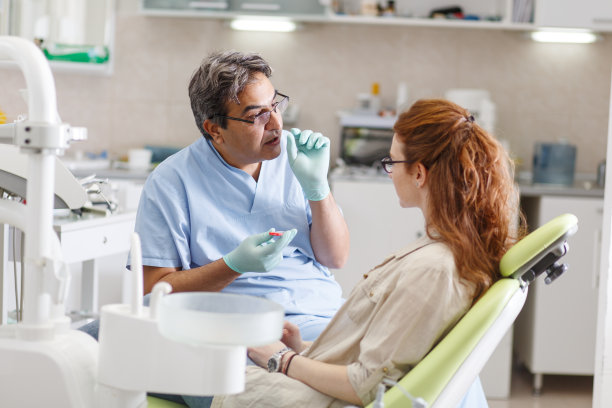The Importance of Proper Dental Care After Extracting a Tooth for Long-Term Oral Health
Summary: Proper dental care following the extraction of a tooth is crucial for ensuring long-term oral health. This article explores the importance of post-extraction practices, outlining four key aspects: promoting healing, preventing infection, maintaining alignment, and fostering self-confidence. By adhering to recommended care guidelines, individuals can enhance recovery, avoid complications, and ultimately sustain a healthy smile. Understanding the significance of each aspect underscores the essential role that dentists and oral hygiene play in overall oral health after tooth extraction.
1. Promoting Healing of the Extraction Site

After a tooth extraction, the bodys primary focus is on healing the wound where the tooth used to be. Proper dental care can significantly promote this healing process. Keeping the extraction site clean is essential to prevent infection and facilitate healing. Dentists often recommend gentle rinsing with warm salt water to help keep the area clean without disrupting the blood clot that forms.
It is also crucial to avoid disturbing the site by not touching it with fingers or the tongue. Careful monitoring of any swelling or discomfort is necessary; if it worsens or doesn’t improve after a few days, consulting a dentist is advisable. Using ice packs on the outside of the cheek can help reduce swelling during the first 24 hours, enhancing the healing process.
Furthermore, adhering to a diet of soft foods for the initial days post-extraction can significantly aid in minimizing irritation to the extraction site. Foods like yogurt, applesauce, and smoothies provide necessary nutrition without compromising healing. These small measures collectively foster an environment that supports optimal healing.
2. Preventing Infection and Complications
Infection is a significant risk following tooth extraction due to open wounds in the mouth. Therefore, proper dental care is paramount in preventing complications such as dry socket or infections. Following the dentist’s aftercare instructions meticulously can greatly reduce these risks. For instance, patients often receive specific guidelines about when to start brushing their teeth again and how to do so gently without affecting the extraction site.
Another critical aspect is the use of prescribed medications. Dental professionals might recommend antibiotics if theres a concern about infection. Completing the full course of antibiotics, if prescribed, is essential even if symptoms seem to resolve quickly. Ignoring or discontinuing medication can lead to resistant bacteria or an unhealed site.
Maintaining regular dental check-ups during recovery also plays a crucial role in preventing complications. These visits allow the dentist to monitor the healing process, and any signs of infection or complications can be addressed promptly. Early intervention can save a patient from significant discomfort and additional dental procedures later on.
3. Maintaining Proper Dental Alignment
Another often-overlooked aspect of post-extraction care is the impact on dental alignment. When a tooth is removed, it creates a space that neighboring teeth may drift into over time. This misalignment can lead to various issues, including difficulty in chewing and increased risk of gum disease. Therefore, maintaining proper dental alignment after extraction is essential for long-term oral health.
To prevent neighboring teeth from shifting, dentists may recommend options like dental implants, bridges, or retainers as part of post-extraction management. These solutions not only fill the gap left by the extracted tooth but also help preserve the remaining tooth structure and alignment in the mouth. Discussing these options with a dentist right after extraction can provide a clear plan for restoration.
Furthermore, incorporating regular dental visits following tooth extraction can facilitate the proper monitoring of alignment and preventive care. Patients should actively communicate with their dentist about any changes in their bite or discomfort during chewing, ensuring prompt action can be taken before any misalignment becomes problematic.
4. Fostering Self-Confidence and Oral Hygiene Habits
Tooth loss can significantly impact an individuals self-esteem and confidence. After a tooth extraction, engaging in proper dental care not only promotes physical healing but also aids in restoring emotional well-being. A healthy smile can enhance self-confidence, and following dental care practices post-extraction is a step towards achieving this.
Moreover, instilling good oral hygiene habits post-extraction can contribute to long-term oral health. Patients should be educated on brushing techniques that avoid the extraction site while still maintaining cleanliness in the mouth. Encouraging consistent oral hygiene practices can help prevent decay in other teeth, ensuring overall health and a beautiful smile.
Lastly, dental professionals play a key role in kindness and encouragement during this process. They can provide resources and support to help patients manage their self-esteem concerns while promoting a positive outlook on recovery and oral hygiene.
Summary:
In conclusion, proper dental care after tooth extraction is crucial for promoting healing, preventing infections, maintaining dental alignment, and fostering self-confidence. Each of these aspects emphasizes the importance of comprehensive care, underscoring how diligent post-extraction practices can have lasting effects on ones oral health. Consulting with dental professionals for personalized guidance can ensure the best recovery outcomes and set a foundation for lifelong oral hygiene.
This article is compiled by Vickong Dental and the content is for reference only.


